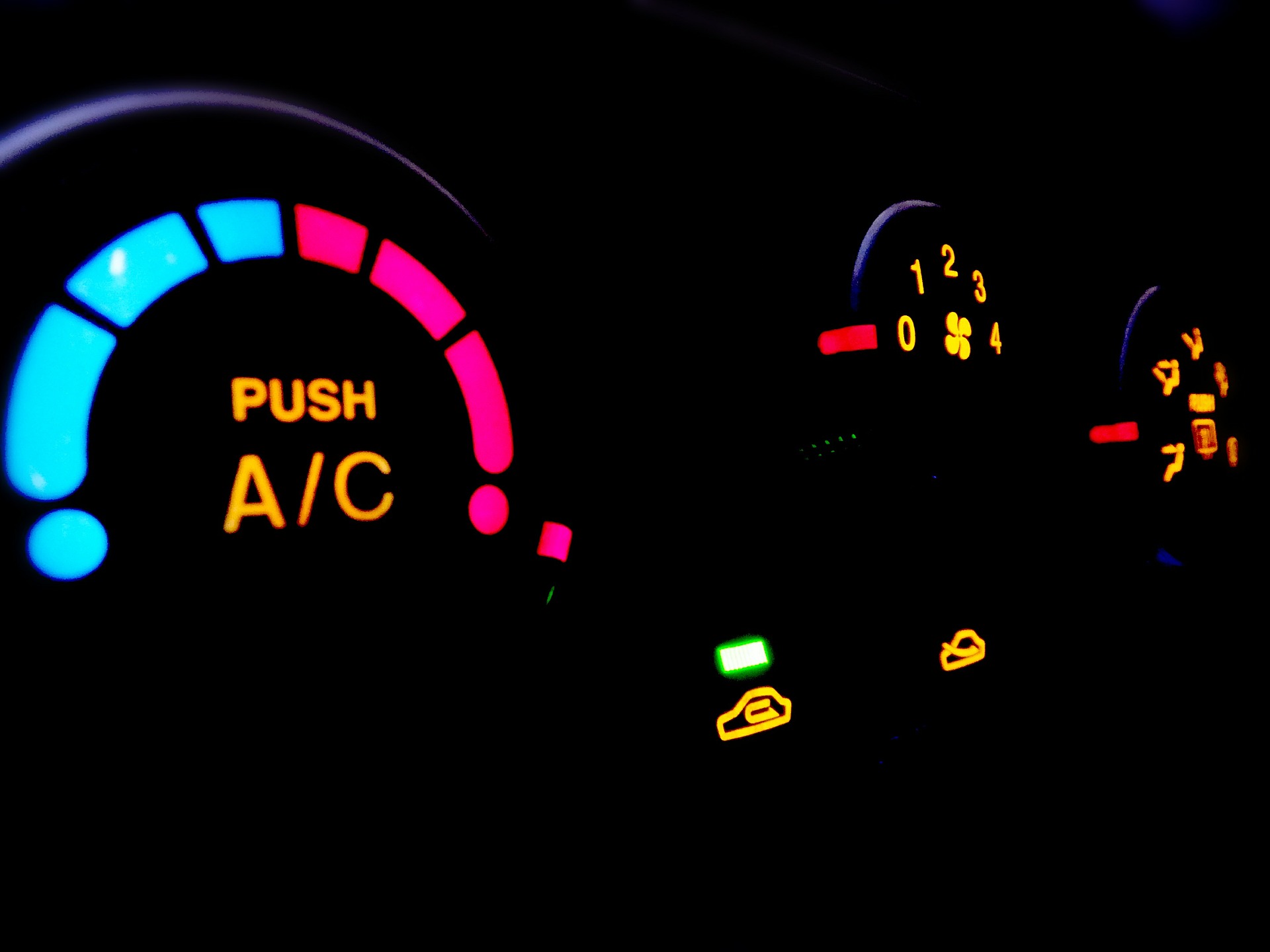For many people, having air conditioning in their vehicle is a necessity rather than a luxury, so it can be stressful when issues arise with the air conditioning system. Having a basic understanding of the system and how it works can help you pinpoint what the problem might be and get your vehicle cooled down again as quickly as possible.
The air conditioning system itself is comprised of several components, including a valve that regulates refrigerant flow, two heat exchangers, and a compressor that is driven by the engine. Problems with each of these components can cause the air conditioning from working as well as it should. Here are some of the common signs of air conditioning problems and how to approach each issue.
1. No cold air
If your air does not get cold at all, the most common cause is a refrigerant leak. The system relies heavily on refrigerant to make cold air, and the system will not function without it. Leaks usually happen due to holes in a connection or hose, although there can be problems with the compressor or condenser or even a ruptured evaporator.
Unfortunately, figuring out where the leak is can be difficult since refrigerant evaporates in the environment. A mechanic will use fluorescent dye to trace the system with a blacklight and figure out where the leak is. Once the leak is identified and repaired, the refrigerant can be replaced.
2. Only cool air
Another common problem is a system that blows cool air without it ever getting truly cold. Typically, this issue is due to low refrigerant in the system. When the level is low, the pressure in the system decreases and the clutch in the compressor can fail to trigger. This issue could also be related to a blocked or failed condenser, which is meant to condense the refrigerant from a gas to a liquid. The clutch switch itself can also fail. When this happens, a mechanic will look at each major component to see what is causing the problem and replace anything that is broken.
3. Air that suddenly gets hot
Sometimes, drivers notice that the system seems to be working fine, and then, suddenly, the air gets hot. When this happens, it typically relates to the expansion valve, which dispenses refrigerant into the evaporator. If this valve gets blocked, the refrigerant cannot reach the evaporator. The valve can even freeze if moisture is present. A mechanic will need to test the system and look at this valve to figure out why it is malfunctioning and what could be causing the block.
4. Bad smells
If you notice that the air coming from the conditioning system smells like mold or mildew, bacteria may be growing in the system. This can happen when the air conditioning is not often used or if it is always used at the highest setting, as this can cause moisture to build up in the unit. When microorganisms start to grow on the evaporator, this will cause the foul smell. To fix this issue, you should first replace the air filters on your vehicle—these trap dirt, water, and other pollutants. If this does not fix the problem completely, you can add an antibacterial solution to the evaporator to prevent contaminants.
5. No air
Vehicles that blow nothing when the air conditioning is turned on can be especially frustrating. Furthermore, the problem is not always clear cut, as many issues could be at play. A fuse could have blown or a relay could have gone bad, so it is important to make sure that the system is getting adequate electrical current.
The blower motor or blower resistor could also be damaged. The motor pushes air through the vents like a fan, while the resistor controls the flow of air through the vents. A blocked air intake can also cause the system to stop blowing air, as can damaged belts and hoses that help operate the air conditioning. Typically, you should start by replacing the fuse and then have a mechanic test the other components if the system does not start working.
6. Damp floors
A wet car floor is a very serious issue stemming from an air conditioning system that is not working properly. This occurs when the drain line for the system gets clogged. Typically, the clog results from a film that builds up over time and is caused by bacteria. The drain line itself is a hose that runs from the evaporator heater box through the floor to the undercarriage to remove moisture. If the line gets clogged, water will back up and typically collect on the passenger side floor. A mechanic can replace or repair the line and figure out what caused the blockage. Usually, you will notice a mildew-like smell before the system gets clogged. If you do not, there may be a different issue contributing to the blockage.
